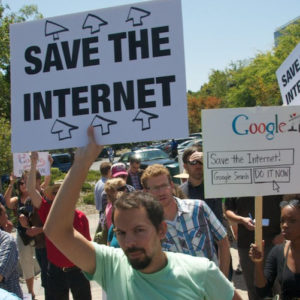The internet as we know was supposed to come screeching to a painful halt over a year ago when net neutrality’s repeal went into effect. You might dimly remember the long line of celebrities and their dire predictions of the end of internet days.
Cher was good enough to tell us in November 2017 that fewer Americans would have internet access, that the lucky people who still had access would only see what Comcast, AT&T and Google wanted them to see, and that connectivity would become ever slower and more expensive.
A few months later, Senate Democrats predicted that the end of net neutrality would mean the internet would come to users one word at a time (which they tweeted one word at a time for dramatic effect). Bernie Sanders, never one for understatement, predicted that the internet as we know it “would cease to exist.”
Well here we are, a year later. It’s safe to say that Cher’s and the Senate Democrats’ predictions were woefully wrong. In a sense, though, Sanders got it right. More than a year after the repeal went into effect, the internet has changed quite a bit.
The average download speed in the U.S. is up 24 percent. And that’s just the average. Download speeds are up almost 140 percent in Illinois, 90percent in Georgia, 74 percent in Ohio, 60 percent in Pennsylvania, 50 percent in Florida, 33 percent in Texas, 20 percent in California, and 6percent in Virginia. Not every state is a winner. New Jersey’s average speed is down 14 percent, New York’s 30 percent, and North Carolina’s 43percent. But, overall, the internet in the United States is significantly faster, not significantly slower, as doomsayers predicted.
And what about price?
If the internet simply had not gotten worse, the 24 percent speed increase would have been accompanied by a 24 percent price increase. But the average price of residential internet service is down from last year. The price didn’t even keep pace with inflation.
And what of Cher’s prognostication that repealing net neutrality would result in fewer Americans having internet access? The number of internet users in the United States is up more than 1% from last year. That’s not much, but it’s twice the size of the increase in the number of people in the U.S. over the same period.
Under net neutrality, the government forced internet service providers to charge the same price to people checking email as to people streaming music. ISPs had to charge gamers who wanted gigabytes of data in real-time the same price as “Game of Thrones” bingers who also wanted gigabytes, but could wait for the data to buffer in the background.
While the words sounded egalitarian, they didn’t amount to a working solution. Net neutrality was like forcing a toll road authority to charge motorcycles the same price as 18-wheelers, and to charge a person who traveled for one exit the same price as someone who traveled across the state.
A “neutral” price is decidedly not neutral when people consume the same good under decidedly different conditions and in different quantities. In the name of “neutrality,” the law forced low-use customers to subsidize high-use customers.
In the end, ISPs know better than politicians and bureaucrats how to deliver internet service. And consumers know better what services they want, and what they are willing to pay. All the caterwauling from Cher to Sanders doesn’t change any of that.
What makes the government’s meddling in internet services stand out is the fact that the industry evolves so quickly that it is obvious that government regulation was doing more harm than good. That should make voters think twice about tolerating unnecessary government regulation in other industries. Because the minute the government got out of the business of deciding how ISPs were to handle data and how they were to price their services, nearly everyone became better off. Just don’t expect any of the critics to admit how wrong they were.
Luckily the numbers speak for themselves.

